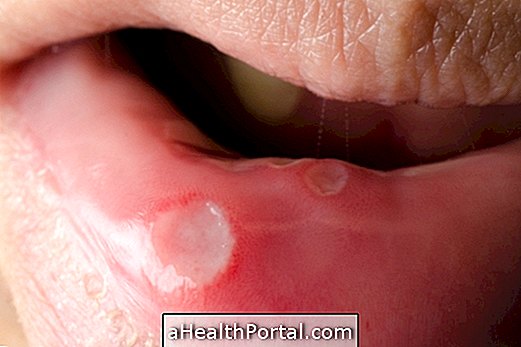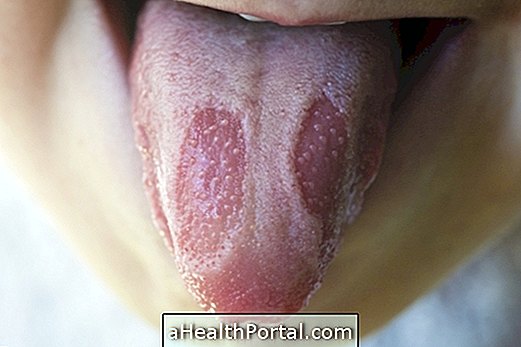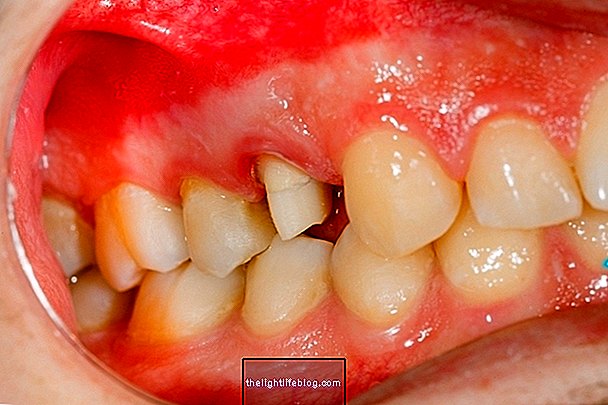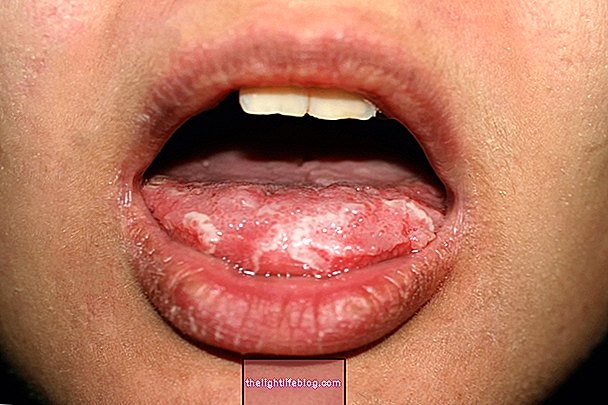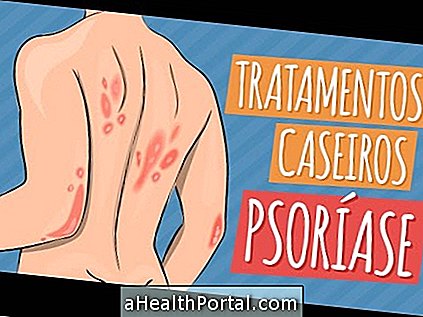The dentigerous cyst is one of the most frequent cysts in dentistry and happens when there is accumulation of fluid between the structures of formation of the non erupted tooth like the enamel tissue of the tooth and the crown, which is the part of the tooth that is exposed in the mouth. The unerupted tooth or even is the one that was not born and has no position in the dental arch.
This cyst is more frequent in teeth called third molars, popularly called sessile but may also involve the canine and premolar teeth. Wisdom is the last tooth to be born, usually between 17 and 21 years of age, and its birth is slow and often painful, and in most cases it is recommended by the dentist to remove the tooth before its full growth. Learn more about wisdom tooth.
The dentigerous cyst is more common in men between 10 and 30 years, has slow growth, no symptoms and is not serious, and can be easily removed through a surgical procedure, according to the dentist's guidelines.
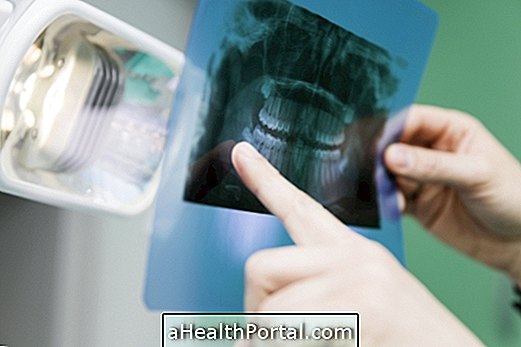
Main symptoms
The dentigerous cyst is usually small, asymptomatic and is only diagnosed on routine radiographic examinations. However, if there is an increase in size it can cause symptoms such as:
- Pain, being indicative of infectious process;
- Local swelling;
- Numbness or tingling;
- Displacement of teeth;
- Discomfort;
- Deformity on the face.
The diagnosis of the dentigerous cyst is made through the X-ray, but this examination is not always enough to complete the diagnosis, because in the radiography the characteristics of the cyst are similar to other diseases, such as keratocyst and ameloblastoma, for example, which is a tumor that grows in the bones and mouth and causes symptoms when it is very large. Understand what ameloblastoma is and how the diagnosis is made.
How is the treatment done?
The treatment for the dentigerous cyst is surgical and can be through enucleation or marsupialization, which is chosen by the dentist depending on the age of the person and size of the lesion.
Enucleation is usually the dentist's choice method and corresponds to total removal of the cyst and even tooth. If the dentist sees a possible eruption of the tooth, only partial removal of the cyst wall is allowed, allowing eruption. It is a definitive treatment without the need for other surgical procedures.
The marsupialization is done mainly for larger cysts or lesions involving the jaw, for example. This procedure is less invasive because it is performed to decrease pressure within the cyst through drainage of the fluid, thereby reducing the lesion.

